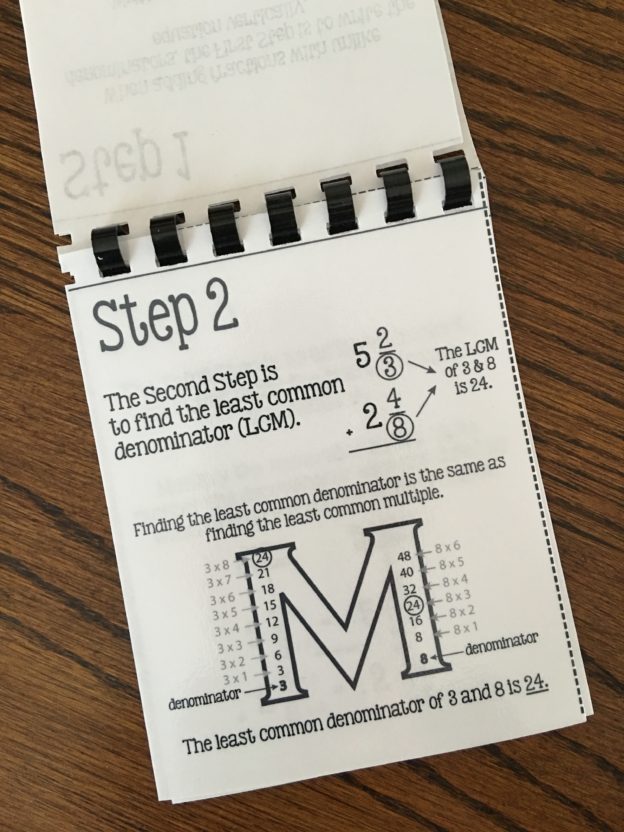As an adult, I can figure out how to do almost anything if I am able look at an example. I would bet that you are the exact same way.
So when I started teaching fifth grade math, I decided that having resources available for my students would be the perfect way to get them the help they need when they are struggling and I am busy with other students. An added bonus…it would allow my students to take charge of their learning.
I busily went about creating many different resources all designed to foster student independence, but my favorite by far is the “We Flip for Math” series.

I have to admit, however, my students were not as eager to use these step-by-step guides as I had hoped. Don’t get me wrong, some students enjoyed using them from the start. Others, it seemed, preferred to have the teacher ‘do the thinking’ for them. And still others, would eagerly get a “We Flip for Math” flip book only to flip through it aimlessly.
Parents, on the other hand, LOVE the flip book resource! They claim having this resource at home when their child is doing homework is the greatest thing ever!

So, why were my students not experiencing the same success as their parents. Why was this resource not allowing my students to be more independent?
True, there are always going to be those students that prefer you do the work for them, but what I discovered is that many students simply don’t know how to take a guide or an example and apply it to the problem they are trying to solve.
It seems that somewhere along the line, we adults learn how to transfer the learning an example provides to something new we are trying to do. I, as a teacher, had assumed it was a skill my 5th grade students already had. Once I identified this as the central problem, I was able to set about solving it.
How? I explicitly teach how to look at an example and apply it to the problem I am working on. This takes a great deal of modeling. I make sure to ‘think aloud’ as I work through problem after problem all the while referring back to the example for help. In doing so, students see just how helpful the example can be.

I am happy to say that persistent practice has paid off. My students truly are more independent and much less reluctant to attempt challenging problems all because they have learned how to rely on examples to help them get the job done.

If you are interested in trying a “We Flip for Math” flip book in your classroom, try this one…It’s FREE! If you do like it, I would suggest your purchase the bundle…it will save you $$ and it is a growing bundle, so purchase now!
As Always…Wishing You the Best!
Mrs. B
